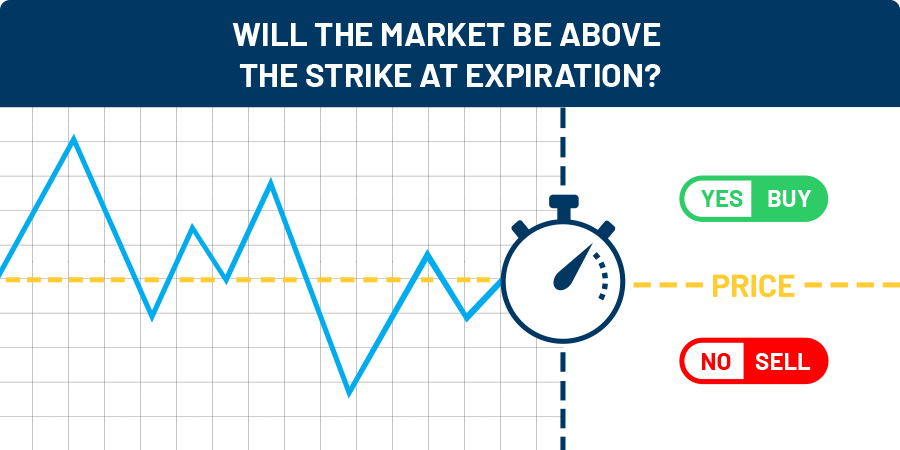Have you ever heard the saying “options trading is like playing with fire”? It’s not just a saying – it’s a stark reality. While options trading offers the potential for extraordinary returns, it’s also fraught with danger, especially for the inexperienced trader. The allure of “leverage” – the ability to control a large amount of assets with a small investment – can be intoxicating, but without the necessary knowledge and discipline, it can lead to devastating losses.

Image: www.compsuite.com
The truth is, options trading is a complex financial instrument that can be incredibly volatile and risky. It’s not something to embark on lightly. This article aims to demystify the dangers of options trading, shedding light on the often overlooked pitfalls that can leave even seasoned investors with shredded portfolios.
The Allure of Leverage: A Double-Edged Sword
The primary attraction of options trading lies in its leverage – the ability to control significant amounts of stock with a relatively small investment. This leverage seemingly magnifies potential profits, making it incredibly attractive for those seeking big returns. For instance, if you buy a call option on 100 shares of a company for $10, you’re able to control the movement of 100 shares of the underlying stock for just $1,000. If the stock price rises significantly, your profits can be substantial. However, the reverse also holds true – a significant drop in the stock price can lead to substantial losses, much more than your initial investment.
The danger of leverage lies in its double-edged nature. While it can exponentially increase profits, it also magnifies losses in the same proportion. A small, seemingly insignificant price movement in the underlying stock can result in a significant percentage loss on your option position. This is why options trading is often referred to as “high-risk, high-reward” – a perfect storm for emotional trading and potentially catastrophic financial repercussions.
The Complex World of Option Pricing: Beyond Black and White
Unlike buying and selling stocks directly, option pricing is driven by a complex interplay of multiple factors:
- Underlying stock price: As the price of the underlying stock fluctuates, option prices move correspondingly.
- Time decay (theta): Options lose value over time – the closer the expiration date, the faster the decay. This is a constant drain on the value of your position.
- Volatility: High volatility in the underlying stock price leads to higher option prices. However, high volatility also increases the risk of wide – and potentially detrimental – price swings.
- Interest rates: Interest rates play a complex role in option pricing, but generally, higher interest rates tend to increase the value of out-of-the-money options.
- Dividends: When a company pays dividends, it can impact the pricing of certain options.
Understanding how each of these factors interacts with the others is crucial for successful options trading. A novice trader may mistakenly focus solely on the price of the underlying stock, unaware of the powerful influence of other factors like time decay or volatility. This lack of understanding can lead to costly mistakes and unexpected losses.
The Perils of Time Decay: The Silent Killer of Options Positions
Time decay (theta) is one of the most insidious dangers for options traders. It’s like a constant drain on your position, silently eroding its value over time. This is particularly dangerous for long-term options traders who believe the underlying stock will rise but don’t account for the consistent decline in their options’ value simply because time is passing. As the expiration date approaches, the value of your options can plummet rapidly, leaving you with little to no profit – even if the underlying stock has risen.
For example, imagine you bought a call option on 100 shares of XYZ stock with a strike price of $100 and an expiration date six months out. The option cost you $10. If the stock price stays below $100, the option will lose value each day due to time decay. By the expiration date, the option may be worthless, even if the stock price has risen slightly. The longer you hold an option, the more time decay affects it. Understanding this concept is crucial for managing your options portfolio and maximizing your returns.

Image: rmoneyindia.com
Volatility: Friend or Foe?
Volatility, while seemingly a friend for those holding options, can also turn into a formidable foe. When volatility rises, option prices increase, presenting opportunities for significant profits. However, high volatility also means that price movements can be explosive and unpredictable, leading to sudden and substantial losses. If the stock price makes an unexpected move against your position, your losses can easily outpace your initial investment.
For instance, if you buy a call option on 100 shares of a company that has been experiencing volatile price swings, your option may skyrocket in value if the stock price rises significantly. However, if the stock drops significantly due to unexpected news, your option can plummet in value, leaving you with substantial losses.
The Psychological Traps of Options Trading: Fear, Greed, and the Human Element
The potential for high profits can easily lead to emotional trading, where fear and greed drive decisions instead of disciplined analysis. This can have devastating consequences. For example, the fear of missing out (FOMO) can lead novice traders to buy options at inflated prices when the market is already overheated. Conversely, greed can lead them to hold onto losing positions for too long, hoping for a miracle turnaround, only to witness their entire investment evaporate.
Options trading requires a strong understanding of risk management and a disciplined approach. Without these, it’s easy to fall victim to the psychological pitfalls that can lead to poor decisions. It’s important to have a clear trading plan and stick to it, even when the market is volatile or your emotions are running high. Emotional discipline is just as important as technical expertise when it comes to options trading.
The Importance of Thorough Research and Education
It’s crucial to remember that options trading is not a get-rich-quick scheme. It demands a significant investment of time and effort in learning the complexities of options pricing, risk management, and trading strategies.
Start with a thorough understanding of the basics of options trading – what they are, how they work, and the various types of options available (calls, puts, straddles, etc.). Familiarize yourself with concepts like strike price, expiration dates, time decay, and volatility. Explore various trading platforms and educational resources to learn about different options strategies. Practice with simulation platforms or paper trading before risking real money.
Remember that options trading is a marathon, not a sprint. Don’t chase quick returns or get caught up in hype. Start small, learn from your mistakes, and patiently build your knowledge and experience over time. Only then can you approach options trading with the necessary discipline and understanding to navigate its complexities and potentially reap its rewards.
Dangers Of Options Trading
Conclusion
Options trading is a powerful financial instrument, but it’s not for the faint of heart. It requires a deep understanding of the market, the ability to analyze and manage complex risks, and a strong sense of emotional discipline. If you’re considering venturing into options trading, be sure to do your homework, start small, manage your risk carefully, and remember that there’s no guarantee of profits. By approaching options trading with caution, discipline, and an unwavering commitment to learning and adapting, you can increase your chances of success while minimizing the risks.






